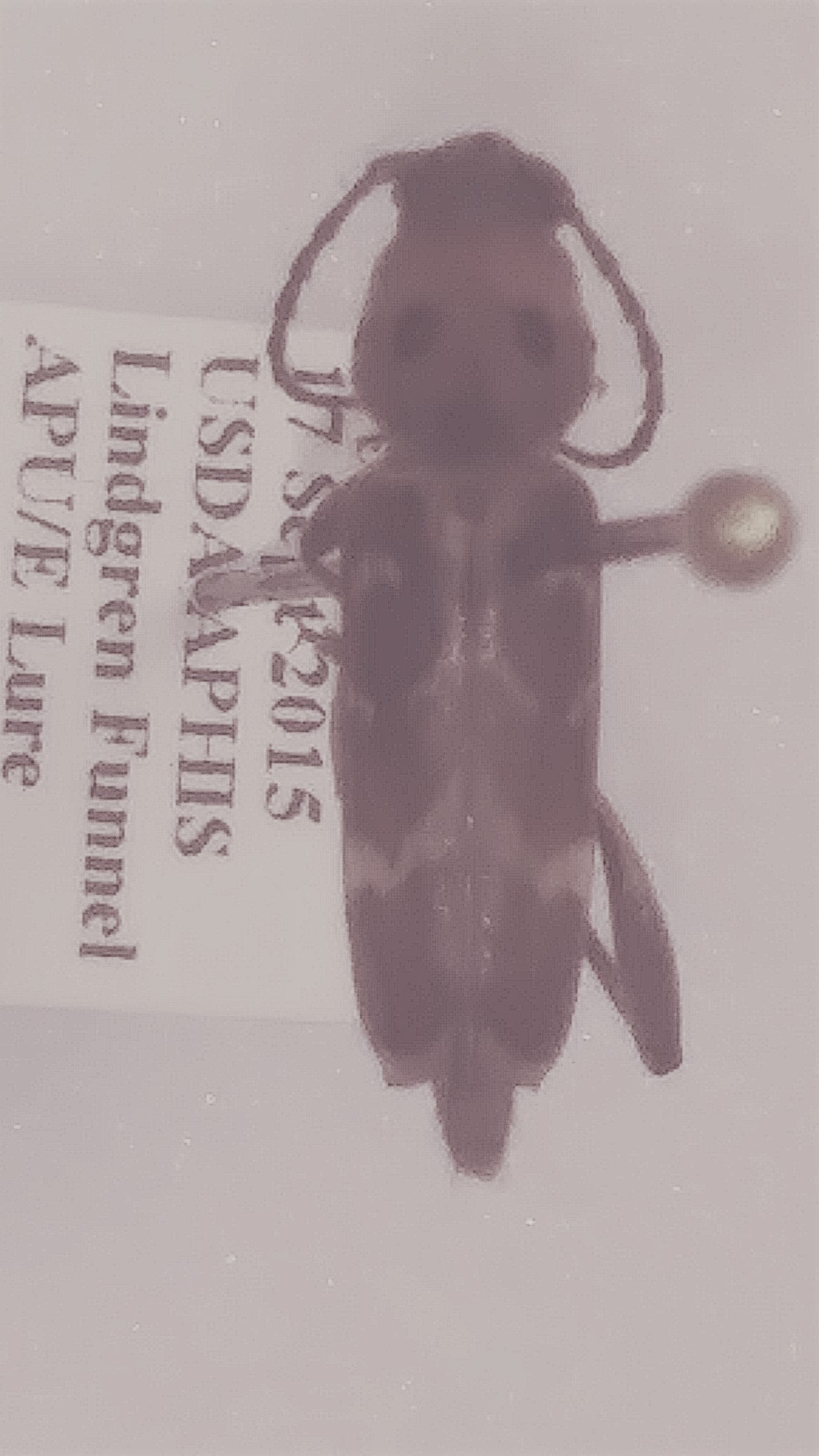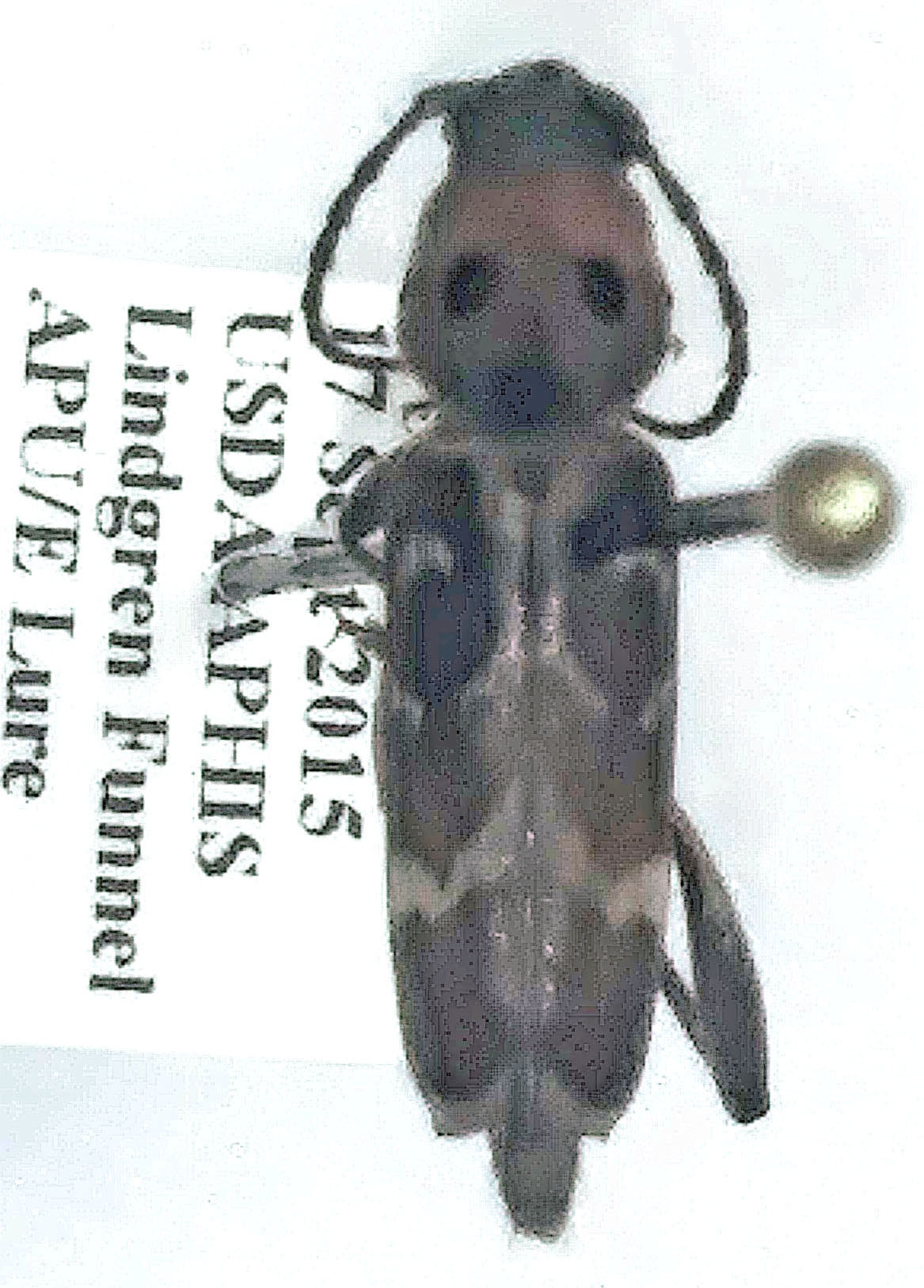| Author |
 Topic Topic  |
|
|
dryobius
Member Rosenbergia
   
USA
1887 Posts |
 Posted - 08/06/2020 : 13:02:39 Posted - 08/06/2020 : 13:02:39



|

346.62 KB
collected near Denver, Colorado, USA
X. smei ? or maybe X. stebbingi ??
Sorry for the terrible image. |
|
|
Capitaine
Scientific Collaborator
   
France
1841 Posts |
 Posted - 08/06/2020 : 14:00:20 Posted - 08/06/2020 : 14:00:20



|
to help

287.93 KB |
Claude |
 |
|
|
Xavier
Scientific Collaborator
    
France
12213 Posts |
 Posted - 08/06/2020 : 15:01:07 Posted - 08/06/2020 : 15:01:07



|
Xylotrechus deletus Lameere, 1893 following picture in Gressitt(1970):

79.02 KB
I have never seen the holotype of this species, and I do not know if Gressitt ID is right or not. |
Edited by - Xavier on 08/06/2020 18:21:43 |
 |
|
|
Vitali
Member Rosalia
  
Estonia
994 Posts |
 Posted - 08/06/2020 : 15:16:41 Posted - 08/06/2020 : 15:16:41



|
| Xylotrechus smei seems to be a cosmopolitan invasive species, found also in Africa in Tanzania and Malawi. |
 |
|
|
dryobius
Member Rosenbergia
   
USA
1887 Posts |
 Posted - 08/06/2020 : 21:42:41 Posted - 08/06/2020 : 21:42:41



|
Thank you. Has X. smei invaded Europe?
I believe then that this species must be X. smei. It is very difficult to explain how it was captured in Colorado (USA) !!
However, the data is 100% correct. There has only been this one specimen so far. |
 |
|
|
Vitali
Member Rosalia
  
Estonia
994 Posts |
 Posted - 08/06/2020 : 22:50:53 Posted - 08/06/2020 : 22:50:53



|
| Please have a look at BioLib. This page shows the distribution of X. smei in Asia, Europe, Africa and by the way North America. I don't know where though. |
 |
|
|
Xaurus
Member Rosenbergia
   
Germany
1924 Posts |
 Posted - 09/06/2020 : 00:57:12 Posted - 09/06/2020 : 00:57:12



|
| interesting Dan, please can you make a picture with lateral view ! |
 |
|
|
dryobius
Member Rosenbergia
   
USA
1887 Posts |
 Posted - 11/06/2020 : 12:39:41 Posted - 11/06/2020 : 12:39:41



|
I have not found any reference to of X. smei being previously reported from North America. Biolib has not documented their information.
The specimen was returned to the museum that loaned it to me. A lateral view will not be easy to get. |
 |
|
|
Francesco
Forum Admin
    
Luxembourg
9454 Posts |
 Posted - 11/06/2020 : 17:50:00 Posted - 11/06/2020 : 17:50:00




|
quote:
Originally posted by dryobius
Thank you. Has X. smei invaded Europe?
This species was misidentified with X. stebbingi for a while. I published a rectification in this paper.
quote:
Originally posted by dryobius
I have not found any reference to of X. smei being previously reported from North America. Biolib has not documented their information.
The North American datum derives from
USDA, 1996 - Importation of Fresh Mango Fruit (Mangifera indica L.) from India into the Continental United States. A Qualitative, Pathway-Initiated Pest Risk Assessment - United States Department of Agriculture, Animal and Plant Health Inspection Service, Plant Protection and Quarantine, 98 pp. Available here.
|
 |
|
|
Robert
Member Rosenbergia
   
Canada
1249 Posts |
 Posted - 16/06/2020 : 17:59:21 Posted - 16/06/2020 : 17:59:21



|
| Francesco, in the 1996 USDA paper you are quoting, Xylotrechus smei is listed as a pest associated with mango in India. Under the Follow Pathway column, it says N, which means it had not been found in the US at that time. |
Robert V. |
Edited by - Robert on 16/06/2020 18:11:53 |
 |
|
|
Francesco
Forum Admin
    
Luxembourg
9454 Posts |
 Posted - 21/06/2020 : 18:03:36 Posted - 21/06/2020 : 18:03:36




|
Well, I corrected the gallery.
Evidently, it was a prophecy.  |
 |
|
| |
 Topic Topic  |
|


